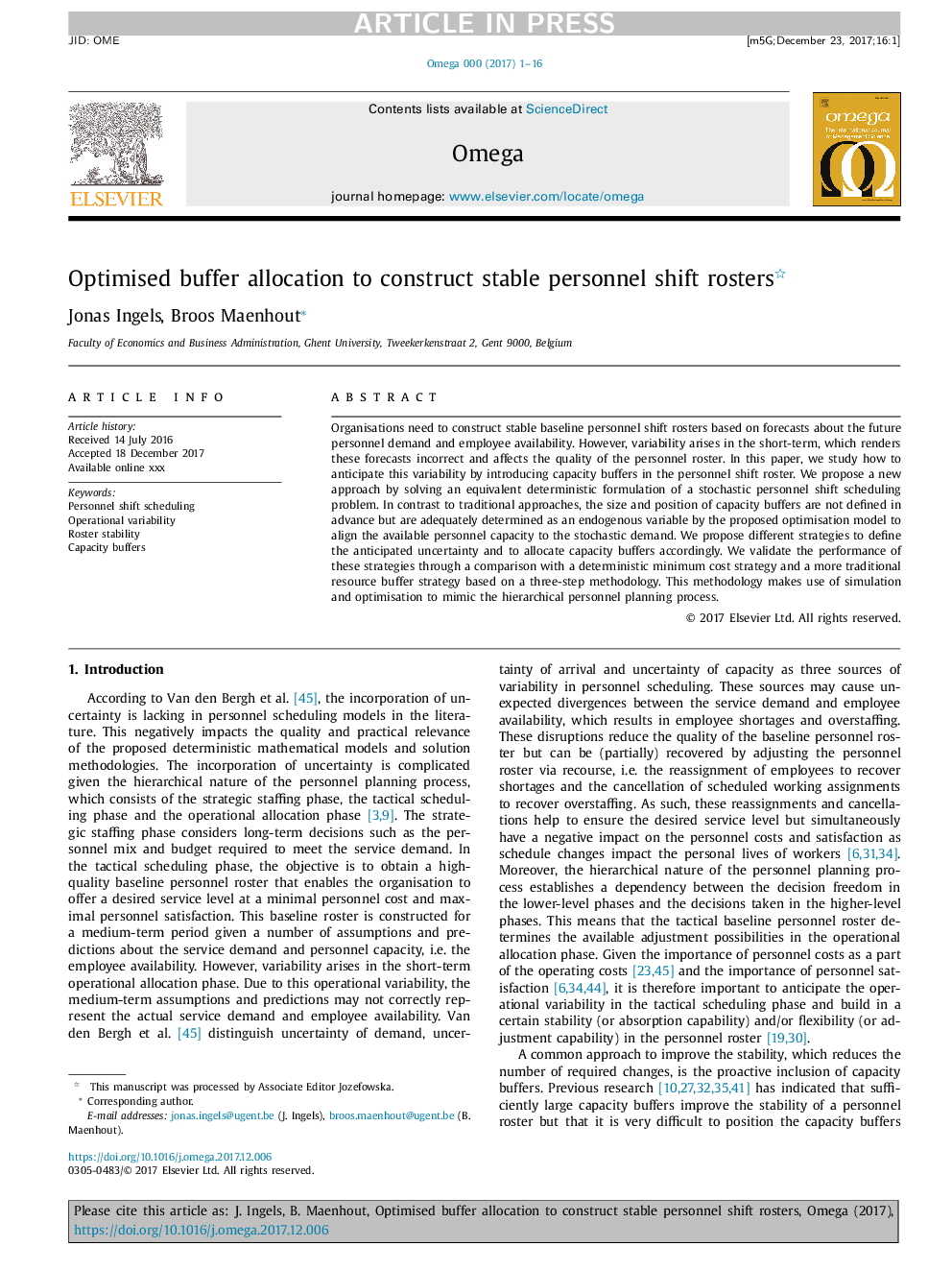| Article ID | Journal | Published Year | Pages | File Type |
|---|---|---|---|---|
| 11011918 | Omega | 2019 | 16 Pages |
Abstract
Organisations need to construct stable baseline personnel shift rosters based on forecasts about the future personnel demand and employee availability. However, variability arises in the short-term, which renders these forecasts incorrect and affects the quality of the personnel roster. In this paper, we study how to anticipate this variability by introducing capacity buffers in the personnel shift roster. We propose a new approach by solving an equivalent deterministic formulation of a stochastic personnel shift scheduling problem. In contrast to traditional approaches, the size and position of capacity buffers are not defined in advance but are adequately determined as an endogenous variable by the proposed optimisation model to align the available personnel capacity to the stochastic demand. We propose different strategies to define the anticipated uncertainty and to allocate capacity buffers accordingly. We validate the performance of these strategies through a comparison with a deterministic minimum cost strategy and a more traditional resource buffer strategy based on a three-step methodology. This methodology makes use of simulation and optimisation to mimic the hierarchical personnel planning process.
Related Topics
Social Sciences and Humanities
Business, Management and Accounting
Strategy and Management
Authors
Jonas Ingels, Broos Maenhout,
